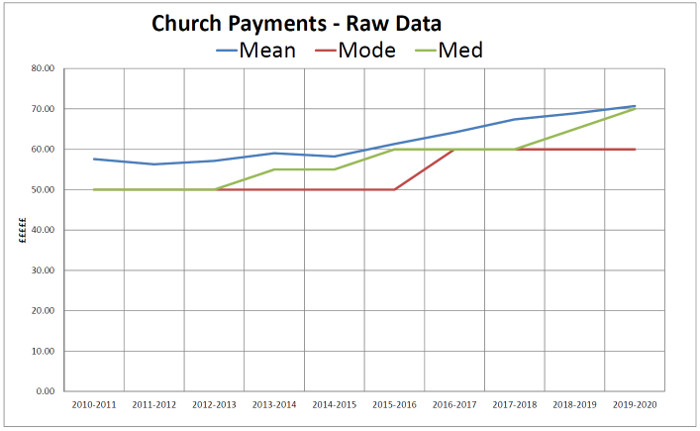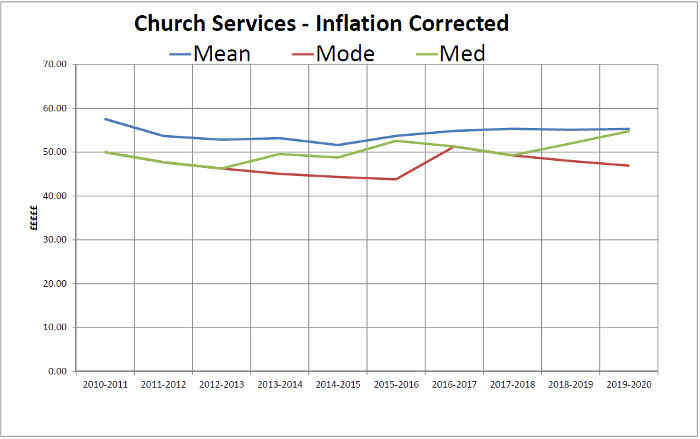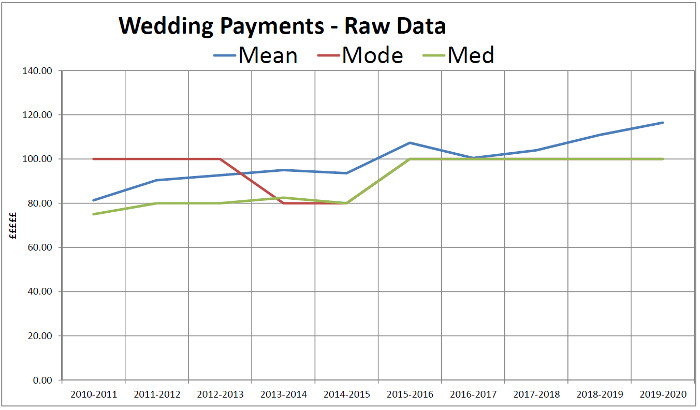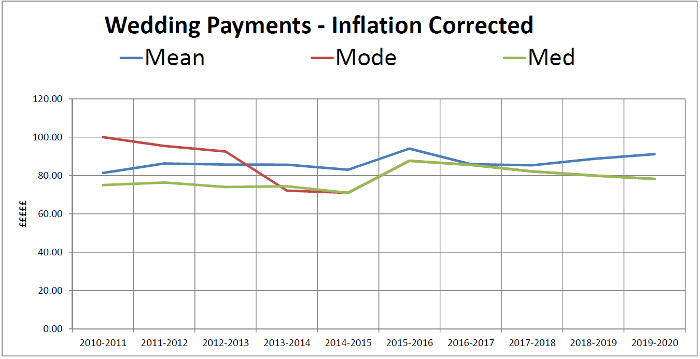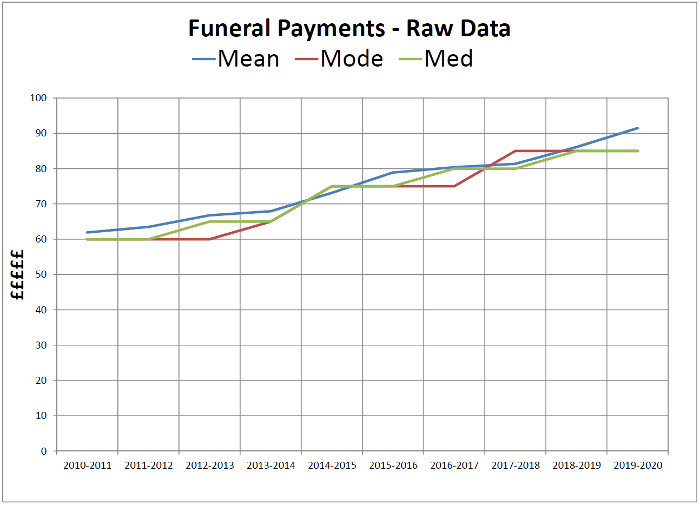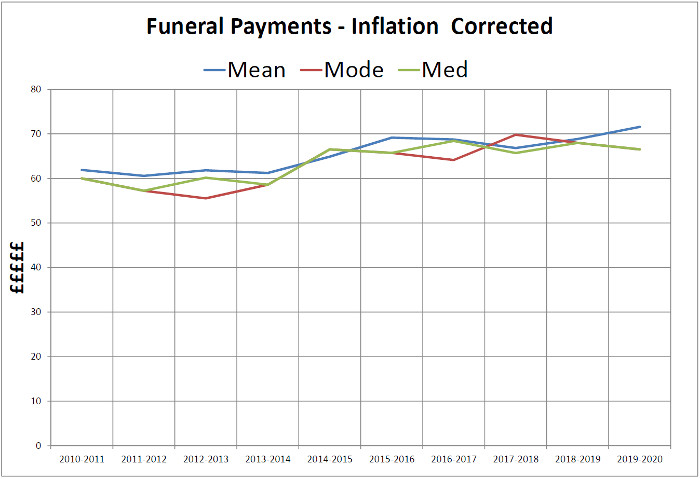ANALYSIS OF FEES PAID
FEES AND PAYMENT - who pays for an organist and how - find out from this PAGE.
Organists Online is NOT an agency and DOES NOT set the fees for organists. When clients use the site to make direct contact with an organist, I have no idea what the financial arrangements
are between them and what fees are paid. Similarly, if a client uses the online form to book an organist, that client says how much they want to pay. However, I do keep a record of the fees
offered, and below are some statistical surveys, each covering the period 1 June - 31 May. Here is a brief explanation of the terms used:
MEAN: this is the raw average. It doesn't really tell us very much as one uncharacteristic figure (such as a fee of £1,000,000) would dramatically alter the mean without giving much idea of what most organists are getting.
MEDIAN: the midpoint. Half the fees offered were more than this and half were less. The median is more stable than the mean as one unusually high or low fee will make little overall change to the median.
MAXIMUM AND MINIMUM: these are self-explanatory - the highest and the lowest fees offered.
MODE: the most commonly offered fee. More clients offered this amount than any other.
Church: Ordinary church services where the congregation is paying the organist.
Private: a special church service, such as a baptism or remembrance service, where a family or private person is paying the organist.
Wedding, Funeral: self-explanatory.
Concert/Rehearsal: fees paid for accompanying a rehearsal/concert of a secular choir.
Singer: Singers Online provides vocalists. Just for the sake of interest, these are fees paid to singers on the same
basis as Organists Online provides fees for organists. Most of these fees are for services/weddings/funerals or bumping up a part of a choir.
Instrument: Occasionally, Organists Online is asked to provide a piper for a funeral, a trumpeter for a wedding, or a traditional jazz band.
These figures are included so that you can see what non-organists are being offered.
Permanent: In the year 2019 - 2020, Permanent Organists are added for the first time. It's not possible to make a meaningful comparison between a job which requires no more than playing for one
service a month to one that embraces many services and lots of choir work etc (£400 v £41,900). However, over a period of a few years, a trend may become apparent which some people could find useful.
This is the first set of stats issued since the pandemic. The class "Private" section hasn't be added as the fees for baptisms etc have been little different to those for general services. These figures don't explain why the maximum for a church service
should have been double that for a concert, but that's the figure that was offered.
During the period of the latest stats, £1,161,178 was offered through Organists Online.
Also during this period, 14% of fees were "by negotiation" so, as the end-amounts aren't known, these are not included in the stats.
These are the figures above in graphic form. The maxima and minima are omitted as they record single events and are totally subject to the whims of one payment each in the course of a year. The Mean, Mode, and Median (see above)
are a conflation of thousands of payments across the period and are less influenced by one-off very high or very low payments.
You can see that, by and large, the value of payments for wedding has kept ahead of inflation, but that for church services has fallen. Funeral payments are generally on the rise, even allowing for inflation.
